RAINBOW TROUT
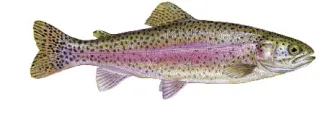
BROWN TROUT
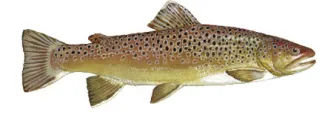
Oklahoma offers a diverse array of trout fishing opportunities with rainbows and the occasional brown stocked regularly throughout the winter months. You're never more than a couple hours drive away from your next trout fishing adventure!
Tulsa has one urban trout pond (Veterans Park) and Oklahoma City has two urban trout ponds (Route 66 Park & Edwards Park) that are stocked from December 1 - February 28. For more information on urban trout pond fishing click here.
CLICK HERE FOR TROUT REGULATIONS
IMPORTANT
Anglers must put their trout on individual stringers, baskets or buckets, labeled with their name and Oklahoma state fishing license number or customer ID number.
SPECIES PROFILE
- Oklahoma Distribution
YEAR-ROUND
SEASONAL (November - March)
SEASONAL (December - February)
- Description
Oklahoma has two introduced species of trout — rainbows and browns, with rainbow trout being far more abundant. Rainbow trout are native to the cold streams west of the Continental Divide but have been introduced here and elsewhere. The brown, or German brown trout is originally from Europe. Browns are stocked periodically in the Lower Mountain Fork River below Broken Bow Lake and in the Lower Illinois River below Lake Tenkiller. Rainbows are stocked approximately every two weeks at all eight of the state’s trout areas during the designated trout seasons.
Oklahoma's two trout species can be easily identified. First look at the side of the fish. A brown trout will have orange and red spots, but a rainbow trout will be iridescent. The brown trout will have few or no black spots on its tail and a creamy belly. In comparison, the rainbow trout will have black spots on its tail and a white belly.
- Habitat
Trout tend to seek out and congregate in calm waters. So when fishing in swift waters, cast your bait above exposed boulders and let it drift down through the calm water on the downstream side (eddy) of the outcropping.
- Natural Food Sources
- Insects
- Crustaceans
- Mollusks
- Fish
- Spawning
Eggs are laid in shallow nests dug out by the female in gravel riffles. The eggs require continuous oxygenation at temperatures around 55°F, the eggs hatch about 21 days after they are laid. The natural spawning of rainbow trout has been documented in the Lower Mountain Fork River.
- Fish Facts
- The key to putting rainbows on the stringer is light tackle. An ultra-light rod and reel spooled with six-pound or lighter line will produce more strikes and provide exciting action. Like all trout, rainbows have definite feeding periods which may begin and end suddenly. There are days, though, when it seems they feed for hours. However, early morning and late afternoon are favored times and most trout are caught during these periods. On streams, larger fish are likely to be found in deep pools while smaller rainbows feed in shallow riffles. Trout face upstream to wait for mayflies, caddis flies, stoneflies, dobsonflies and dragonflies to appear above them. When heavy insect hatches are on, you may see evidence of feeding trout by circular rings or rise forms on the water’s surface.
- If you don’t detect rise forms, you may want to switch to wetflies or nymphs. Feeding habits dictate what works and what doesn’t and there are times and places when only flashing spoons, marabou jigs or spinners work. Bait anglers can tempt rainbows by using whole-kernel corn, cheese, salmon eggs and worms on small (sizes 10 to 18) single or treble hooks.
- Those preferring the challenge of artificial lures will find small spinners, spoons and marabou jigs are most productive. Using artificial flies is an effective way to catch hungry trout on a fly rod.
- Brown trout have a natural ability to withstand warmer water temperatures and higher turbidity than rainbows. In a typical trout stream, rainbows tend to occupy faster moving water while browns can tolerate the more slack stretches. Even though they are hardier than rainbows, browns still require and prefer clear cold waters, and most actively feed when water temperatures range from 50 to 60 degrees.
- Because the brown trout feeds a great deal on the surface they have become very popular with fly fishermen. The stocky brown is a bulldog fighter when hooked, occasionally leaping out of the water. Fishing for browns is best on overcast days, in early morning before the sun is up, and at night. On bright days fish are more often found in the shade of undercut banks or overhanging vegetation.
- Browns commonly feed on mayfly and caddisfly nymphs, grasshoppers, worms, crayfish and minnows. The brown’s varied diet enables anglers to employ some of the same methods used to catch rainbows. However, at Oklahoma’s Mountain Fork River designated trout area, fishing in some areas is restricted to artificial flies and lures with barbless hooks only.
FISHING TIPS
In lakes, ponds and streams with little to no current, bait fished off the bottom is typically the most productive at getting bites.
The basic setup for trout when using a bottom fishing approach is a six foot to seven foot medium- to medium-light action rod and a reel spooled with six- to eight-pound monofilament line. This method requires you to find a singular spot and cast to that spot.
For still water you will want to use a 1/8th to 1/4th ounce casting sinker and 1/4th to 1/2 ounce casting sinker for moving water. You will thread the end of the fishing line through the eyelid of the sinker and tie a size 14 to size 8 treble or single point hook to the end of the line. Slide the casting sinker up the line 1-2 feet above the hook and place a piece of split shot on the line, clamping it down with pliers, to keep the casting sinker from slipping down to your hook.
You will then dab a chunk of PowerBait on your finger and work it around the hook, creating a ball or teardrop shape, until the hook is completely covered. Other productive baits include red worms, meal worms, salmon eggs, mini marshmallows, corn and small minnows.
When you cast to your spot, reel up the slack until the line is tight to the tip of the rod and either hold onto the rod or set it in a rod holder. Trout tend to peck at the bait instead of engulfing it all at once so when the tip of your rod is indicating a bite, grab the rod, reel up any slack and wait for either a steady “thump, thump, thump” or just constant pressure on the line before setting the hook.
The basic setup for trout when using cast and retrieve lures is a six foot to seven foot medium- to medium-light action rod and a reel spooled with six- to eight-pound monofilament or fluorocarbon line.
Reliable cast and retrieve lures (1/32nd - 1/8th ounce) include Rooster Tails in Frog, Grasshopper, Black and Hammered Silver White, Super Dupers in Brass/Gold Prism-Lite and Rainbow Trout, Little Cleo Spoons in Gold Fluorescent Orange Stripe, and Kastmaster Spoons in gold, silver, orange and trout patterns.
If you need to get to greater depth, add a piece of split shot to the line 8-inches above the lure.
Top Habitat to Target
Woody structure - roots wads, log jams and tree lay-downs will hold fish all day long.
Boulders - large rocks or rocky outcroppings create prime ambush spots and also funnel food.
Riffles - these are shallow areas where current speeds are fast in relation to the rest of the stream. Look for seams and eddies created by woody structure or boulders that create soft water for fish to stay out of the faster current.
Pools - particularly the beginning of the pool where the shallow riffle section dumps into the pool. Pools are created by turns in the river or natural impediments like log jams.
Runs - a run is the section between a pool and riffle where water depth and current speed are consistent. Boulders, cut-banks, rocky bank outcroppings and woody structure are great places to target in a run. These areas often hold the largest fish.
Tail-outs - the area at the end of a run where current speed increases as water moves into a riffle section. Tail-outs with shaded areas or a piece of structure are most desirable.
Shoreline Flats/Drop-Offs - flats near lake shoreline that have channel ledges or other steep drop-offs within 50 feet of the shoreline
Rod/Reel Setup
Light to Medium rod
Spinning, spin-casting or baitcasting reel
4-pound to 8-pound test line
Top Lures
- Super Duper
Super Dupers in size 500, 501 and 502 in gold or trout colored patterns
- Editor's pick: 501 Luhr Jensen Super Duper in Brass/Gold Prism-Lite
Image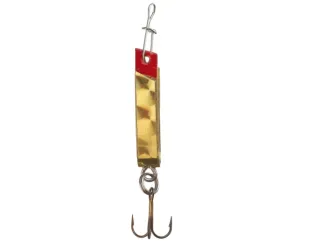
- Inline Spinner
1/16th ounce inline spinners in shades of green, brown, white, black, orange or chartreuse
- Editor's pick: 1/16th ounce Worden's Original Rooster Tail in Grasshopper
Image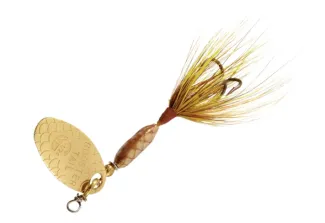
- Spoon
1/16th ounce spoons in shades of gold or silver
- Editor's pick: 1/16th ounce Acme Little Cleo Spoon in Gold Fluorescent Orange Stripe
Image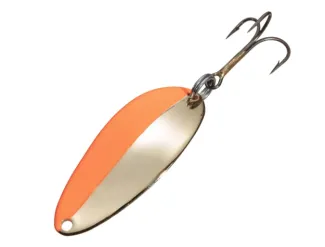
- Slab
1/24th to 1/8th ounce slabs in shades of gold, silver or trout colored patterns
- Editor's pick: 1/16th ounce Acme Kastmaster in Gold/Gold Tape
Image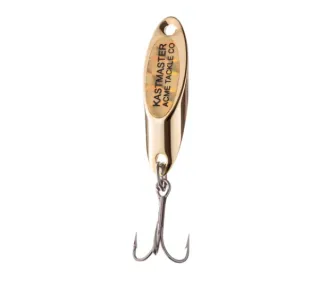
- Soft Plastic
.5" to 2" soft plastic baits in shades of green pumpkin, orange, chartreuse or pink paired with a 1/64th to 1/32nd ounce jig-head
- Editor's pick: 1/64th ounce Trout Magnet in Green/Red Flake
Image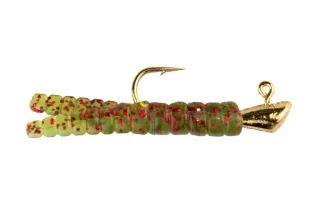
Top Bait
- Paste Bait
Scented paste/dough bait in shades of chartreuse, orange or purple
- Editor's pick: Berkley PowerBait Glitter Chroma-Glow Dough in Rainbow Glitter
Image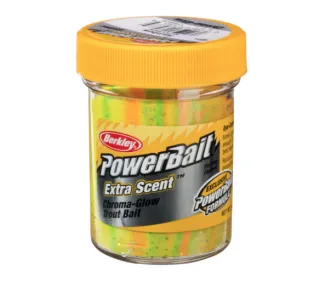
- Egg
Salmon eggs in shades of red, pink, orange or chartreuse
- Editor's pick: Berkley Gulp! Floating Salmon Eggs in Fluorescent Orange
Image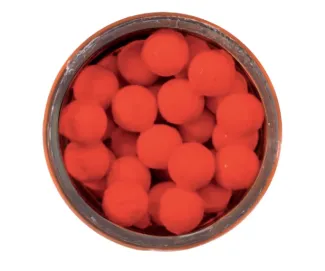
- Marshmallow
Trout marshmallows in shades of red, pink, orange or chartreuse
- Editor's pick: Atlas Super Scented Marshmallows in Orange Garlic
Image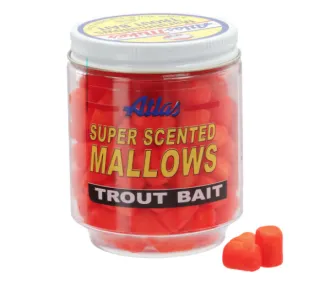
- Worm
Live worms
- Editor's Pick: DMF Bait Co Red Worms
Image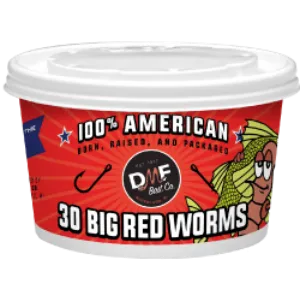
- Short-Horned Grasshopper
Family: Acrididae (short-horned grasshoppers) in the order Orthoptera (grasshoppers, katydids, crickets)
Description: The short-horned grasshopper family includes many familiar jumpers. They are named for their antennae, which are relatively short compared to those in the "long-horned" (katydid) group. The antennae are usually less than half the length of the body and have fewer than 30 segments. Most short-horned grasshoppers are camouflaged with green, olive, tan, brown, or black, though some are quite colorful. Some have colorful wings that only show in flight. The hind legs are specialized for jumping; the mouthparts for chewing.
Like other members of order Orthoptera, short-horned grasshoppers have the first pair of wings long, narrow, fairly thick, and many-veined, functioning as a cover for the second pair, which are membranous and used for flying.
Image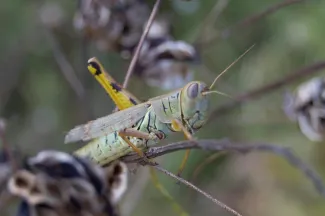
- Corn
Canned or bagged yellow corn
Image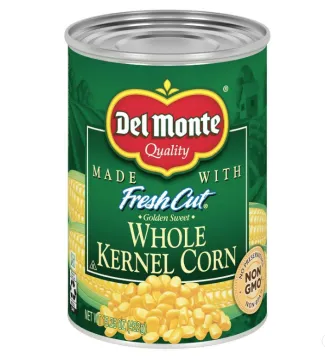
How-To Videos
- PowerBait
- Artificial Lures
- Fly Fishing
- General
CLEANING TIPS
COOKING TIPS
AREA HIGHLIGHTS
- Blue River
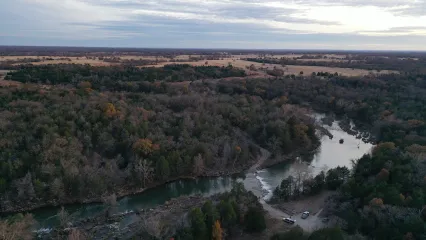
6.25 miles of public wading and bank access make the Blue River Trout Area, located 10 miles north of the South-Central town of Tishomingo, a true gem of public lands. There are a few handicap accessible bank fishing areas around the campgrounds. Muck or hip boots are a must if you don't plan to wear waders. Trails along the river's edge and multiple entrance locations provide ample opportunities for adventurous anglers to find a section of river all to theirself. Native surroundings and relatively deep water along the river banks can create hazardous conditions for children and pets throughout most of the property, but there are several family-friendly fishing areas around the campgrounds.
Trout Stocking Season
- November 1 - March 31
Profile
- 6.25-miles; mostly hard bottom, submerged timber, waterfalls, pocket water, riffles, runs, pools, light vegetation
- Primitive camping areas
- Latrines
- Food/supplies at Scotty's Blue River One Stop
Drive Time
- From OKC: 2 hours
- From Tulsa: 2.75 hours
- From Ada: 45 minutes
Bait & Tackle Nearby
- Scotty's Blue River One Stop (4501 S Bullard Chapel Rd, Tishomingo, OK 73460)
- Walmart Supercenter (3712 W Main St, Durant, OK 74701)
- Walmart Supercenter (2705 W Broadway Ave, Sulphur, OK 73086)
Fishing Tips
Blue River has lots of different types of river sections to target. Bait fished off the bottom is productive in slow moving pools, eddies and deep runs. Artificial lures and flies are more effective in the fast moving water near waterfalls, tailouts, pocket water and riffle runs. Inline spinners, supers dupers and spoons are great options on light-action tackle. Dry flies, nymphs (especially small midge and pupa patterns) and stripping flies can be equally as effective. Seams behind boulders and riffle runs through the pocket water are good places to find multiple fish stacked up. Trout are stocked evenly throughout the public section of river from November through March.
Top option: Artificial
- Editor's Choice: Reliable cast and retrieve lures (1/32nd - 1/8th ounce) include Rooster Tails in hammered copper frog, grasshopper, black and hammered silver white, Super Dupers in brass/gold prism-lite and rainbow trout, Little Cleo Spoons in gold fluorescent orange stripe, and Kastmaster Spoons in gold, silver, orange and trout patterns. If you need to get to greater depth, add a piece of split shot to the line 8-inches above the lure.
- Editor's Choice: Size 6 Chocklett's Bugger Changer in Brown, Olive or Black on a 6-weight fly rod, floating line and 9 foot 4x tapered leader with 2 feet of 5x tippet. Cast upstream cross-current, allow the line to swing in the current with an occasional strip of line and give a few quick strips of line at the end of the swing before picking up the line for a re-cast.
- Other good stripping flies (sizes 6, 8, 10 and 12) include Blane Chocklett's Changers, Rainy's RJ's Jiggy Worm, Rainy's Carter's RL Dragon Fly, and Bead-Head Woolly Bugger.
- Size 8-12 Hoppers and size 14-16 Stimulators can be effective early in the season if the temperatures are not too cold.
- There are occasional caddis and mayfly hatches. Keep a few size 18-22 mayfly and caddis imitating dry flies in your box on the chance that you find surfacing fish. Midge clusters are effective in eddies when there's big hatches, otherwise emerging patterns are more effective when fish are rising during the winter months
- Size 8-12 Stonefly nymphs, size 16 rubber-legged Yellow Sally nymph, size 10-14 San Juan worm, size 12 Green Weenie, size 14-18 Umpqua BH Psycho Prince nymph, size 16-20 Cabela's BH Pheasant Tail nymphs and size 18-22 flashy midge or pupa patterns can be productive when fished below a strike indicator or free drifted on the swing.
Secondary option: Bait
- Editor's Choice: PowerBait in nymph, balled in a teardrop shape around a size 10 or smaller snelled hook and attached to a snap swivel with a 1/8th ounce casting sinker placed above the swivel on the main line (6- or 8- pound monofilament). Cast straight out and let the weight sink to the bottom. Once the weight has hit the bottom, reel up the slack until the line is tight with the rod tip. Place the rod in a rod holder or hold in hand and wait for a bite. On windy days, size up your weight to a 1/4th or 3/8th ounce casting sinker to better keep the line tight to the rod tip, which will help indicate more bites. If you're looking to catch and release, set the hook early before the fish has the opportunity to swallow the hook.
- Other productive baits include salmon eggs, kernels of corn, and scented trout worms.
- Boecher Lake
- Image
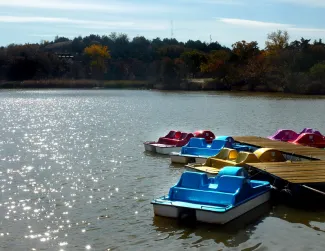
(Lake Watonga is currently closed for dam repairs and renovations; Boecher Lake at Roman Nose State Park is being stocked this season in place of Lake Watonga)
Nestled in the heart of Roman Nose State Park, Boecher Lake features a family-friendly park and amenities.
Trout Stocking Season
- November 1 - March 31
Profile
- 6-acres; mostly soft bottom, light vegetation
- Boat ramp
- Fishing piers/jetties
- Camping with full RV hookup
- ADA compliant
- Country store
- Lodging
- Picnic areas
- Restrooms
Drive Time
- From OKC: 1.5 hours
- From Tulsa: 3 hours
- From Weatherford: 50 minutes
Bait & Tackle Nearby
- Roman Nose General Store (92738 Lot 301, OK-8A, Watonga, OK 73772)
Fishing Tips
Trout will cruise the shoreline flats and coves as well as nearby drop-offs throughout the day. Inline spinning lures, spoons and super dupers work well along shoreline flats and points. But, like most still water trout fishing, the most effective and consistent way to catch them is to fish off the bottom with PowerBait.
Top option: Bait
- Editor's Choice: PowerBait in nymph, balled in a teardrop shape around a size 10 or smaller snelled hook and attached to a snap swivel with a 1/8th ounce casting sinker placed above the swivel on the main line (6- or 8- pound monofilament). Cast straight out and let the weight sink to the bottom. Once the weight has hit the bottom, reel up the slack until the line is tight with the rod tip. Place the rod in a rod holder or hold in hand and wait for a bite. On windy days, size up your weight to a 1/4th or 3/8th ounce casting sinker to better keep the line tight to the rod tip, which will help indicate more bites. If you're looking to catch and release, set the hook early before the fish has the opportunity to swallow the hook.
- Other productive baits include salmon eggs, kernels of corn, and scented trout worms.
Secondary option: Artificial
- Editor's Choice: Reliable cast and retrieve lures (1/32nd - 1/8th ounce) include Rooster Tails in hammered copper frog, grasshopper, black and hammered silver white, Super Dupers in brass/gold prism-lite and rainbow trout, Kastmaster Spoons in gold, silver, orange and trout patterns, and Little Cleo Spoon in gold fluorescent orange stripe.
- Editor's Choice: Size 6 Chocklett's Bugger Changer in Brown, Olive or Black on a 6-weight fly rod, floating line and 9 foot 4x tapered leader with 2 feet of 5x tippet. Cast out and retrieve with quick strips of line. Other good stripping flies (sizes 6, 8, 10 and 12) include Blane Chocklett's Changers, Rainy's RJ's Jiggy Worm, Rainy's Carter's RL Dragon Fly, and Bead-Head Woolly Bugger. Make sure to keep a few size 18-22 mayfly and caddis imitating dry flies in your box on the chance that you find surfacing fish.
- Lower Illinois River
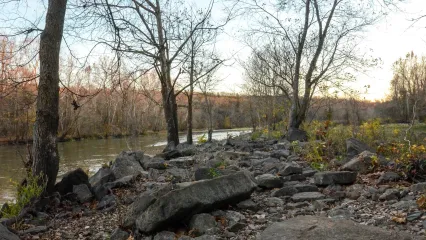
A beautiful tailwater-controlled Ozark stream, the Lower Illinois River Trout Area resides 5 miles north of the East-Central town of Gore. Bank fishing is very limited with a few handicap accessible and family-friendly fishing spots available just downstream of the dam. Most of the river requires the use of waders or hip boots, but once on the river it's easy wading and walking.
Trout Stocking Season
- Year-round
Profile
- 7.75 miles; cobble/gravel bottom, woody laydowns, riffle-pool-run-tailout sections
- Latrines
- Camping with full RV hookups at Gore Landing (ADA compliant)
- Food/shops in nearby Gore
Drive Time
- From OKC: 2.25 hours
- From Tulsa: 1.25 hours
- From Muskogee: 40 minutes
Bait & Tackle Nearby
- Dave's Bait & Tackle (304 S Main St, Gore, OK 74435)
- Walmart Supercenter (1101 W Ruth Ave, Sallisaw, OK 74955)
- Walmart Supercenter (1000 W Shawnee St, Muskogee, OK 74401)
Fishing Tips
With classic riffle-pool-run-tailout sections, the Illinois River has plenty of great trout habitat. Bait fished off the bottom is productive in slow moving pools, eddies and deep runs. Artificial lures and flies are more effective in the fast moving water at the beginning of runs, riffle dump-ins and shallow riffle tailouts. Inline spinners, supers dupers and spoons are great options on light-action tackle. Dry flies, nymphs (especially small midge and pupa patterns) and stripping flies can be equally as effective. Ideal trout fishing occurs when water release is between 200 and 600 cfs. Click here for current water levels.
Top option: Artificial
- Editor's Choice: Reliable cast and retrieve lures (1/32nd - 1/8th ounce) include Rooster Tails in hammered copper frog, grasshopper, black and hammered silver white, Super Dupers in brass/gold prism-lite and rainbow trout, Little Cleo Spoons in gold fluorescent orange stripe, and Kastmaster Spoons in gold, silver, orange and trout patterns. If you need to get to greater depth, add a piece of split shot to the line 8-inches above the lure.
- Editor's Choice: Size 6 Chocklett's Bugger Changer in Brown, Olive or Black on a 6-weight fly rod, floating line and 9 foot 4x tapered leader with 2 feet of 5x tippet. Cast upstream cross-current, allow the line to swing in the current with an occasional strip of line and give a few quick strips of line at the end of the swing before picking up the line for a re-cast.
- Other good stripping flies (sizes 6, 8, 10 and 12) include Blane Chocklett's Changers, Rainy's RJ's Jiggy Worm, Rainy's Carter's RL Dragon Fly, and Bead-Head Woolly Bugger.
- Size 8-12 Hoppers and size 14-16 Stimulators can be effective early in the season if the temperatures are not too cold.
- There are occasional caddis and mayfly hatches. Keep a few size 18-22 mayfly and caddis imitating dry flies in your box on the chance that you find surfacing fish. Midge clusters are effective in eddies when there's big hatches, otherwise emerging patterns are more effective when fish are rising during the winter months.
- Size 8-12 Stonefly nymphs, size 16 rubber-legged Yellow Sally nymph, size 10-14 San Juan worm, size 12 Green Weenie, size 14-18 Umpqua BH Psycho Prince nymph, size 16-20 Cabela's BH Pheasant Tail nymphs and size 18-22 flashy midge or pupa patterns can be productive when fished below a strike indicator or free drifted on the swing.
Secondary option: Bait
- Editor's Choice: PowerBait in nymph, balled in a teardrop shape around a size 10 snelled hook and attached to a snap swivel with a 1/4th or 3/8th ounce casting sinker placed above the swivel on the main line (6- or 8- pound monofilament). Cast 45-degrees downstream and let the weight sink to the bottom. Once the weight has hit the bottom, reel up the slack until the line is tight with the rod tip. Place the rod in a rod holder or hold in hand and wait for a bite. In faster moving water, size up your weight to a 1/2 ounce casting sinker to better keep the line tight to the rod tip, which will help indicate more bites. If you're looking to catch and release, set the hook early before the fish has the opportunity to swallow the hook.
- Other productive baits include salmon eggs, kernels of corn, and scented trout worms.
- Lower Mountain Fork River

Carved into the steep hillsides of the Ouachita Mountains, the Lower Mountain Fork Trout Area, a tailwater-controlled river located 13 miles north of the Southeastern town of Broken Bow, offers stunning views and excellent trout fishing. Forming the heart of Beavers Bend State Park, this area has something for everyone. Extensive flooding in the mid-2010s has drastically altered the river channel, affording new fishing opportunities for anglers who have frequented the river for years. First timers will find a river that takes breathtaking twists, turns and falls over exposed limestone.
Trout Stocking Season
- Year-round
Profile
- 12 miles; hard shoal bottom, mixed cobble/gravel, woody laydowns, light vegetation
- Camping with full RV hookups
- Lodging
- Food/shops in nearby Hochatown and Broken Bow
- Hiking
- Picnic areas
- Restrooms
Drive Time
- From OKC: 4 hours
- From Tulsa: 3.5 hours
- From Durant: 2.5 hours
Bait & Tackle Nearby
- Beavers Bend Fly Shop (545 Beavers Bend Rd, Broken Bow, OK 74728)
- Beavers Bend Marina (196 Marina Ln, Broken Bow, OK 74728)
- Hookers Live Bait Fire & Ice (9114 US-259, Broken Bow, OK 74728)
- Walmart (501 S Park Dr, Broken Bow, OK 74728)
Fishing Tips
The Lower Mountain Fork River features five miles of public access from the base of the Broken Bow Dam downstream to the end of the Beavers Bend State Park. The river features a steep fast-moving section from the base of the dam to the first 259A HWY bridge. Extreme caution should be taken by anglers in this section. The river is much better suited to trout anglers of all skill levels from the first 259A HWY bridge downstream to end of the Beavers Bend State Park. Bait fished off the bottom is productive in slow moving pools, eddies and deep runs. Artificial lures and flies are more effective in the fast moving water at the beginning of runs, fast-moving pools, riffle dump-ins and shallow tailouts. Inline spinners, supers dupers and spoons are great options on light-action tackle. Larger jerkbaits can be used to target big browns and rainbows from the second 259A HWY bridge downstream to the end of the Beavers Bend State Park. Dry flies, nymphs (especially small midge and pupa patterns) and stripping flies can be equally as effective. Check-in with the local fly shop for current fishing conditions and fly suggestions. The trout area continues for seven miles through mostly private land from the end of the Beavers Bend State Park downstream to the US HWY 70 bridge.
Top option: Artificial
- Editor's Choice: Reliable cast and retrieve lures (1/32nd - 1/8th ounce) include Rooster Tails in hammered copper frog, grasshopper, black and hammered silver white, Super Dupers in brass/gold prism-lite and rainbow trout, Little Cleo Spoons in gold fluorescent orange stripe, and Kastmaster Spoons in gold, silver, orange and trout patterns. If you need to get to greater depth, add a piece of split shot to the line 8-inches above the lure.
- Editor's Choice: Size 6 Chocklett's Bugger Changer in Brown, Olive or Black on a 6-weight fly rod, floating line and 9 foot 4x tapered leader with 2 feet of 5x tippet. Cast upstream cross-current, allow the line to swing in the current with an occasional strip of line and give a few quick strips of line at the end of the swing before picking up the line for a re-cast.
- Other good stripping flies (sizes 6, 8, 10 and 12) include Blane Chocklett's Changers, Rainy's RJ's Jiggy Worm, Rainy's Carter's RL Dragon Fly, and Bead-Head Woolly Bugger.
- Size 8-12 Hoppers and size 14-16 Stimulators can be effective early in the season if the temperatures are not too cold.
- There are occasional caddis and mayfly hatches. Keep a few size 18-22 mayfly and caddis imitating dry flies in your box on the chance that you find surfacing fish. Midge clusters are effective in eddies when there's big hatches, otherwise emerging patterns are more effective when fish are rising during the winter months.
- Size 8-12 Stonefly nymphs, size 16 rubber-legged Yellow Sally nymph, size 10-14 San Juan worm, size 12 Green Weenie, size 14-18 Umpqua BH Psycho Prince nymph, size 16-20 Cabela's BH Pheasant Tail nymphs and size 18-22 flashy midge or pupa patterns can be productive when fished below a strike indicator or free drifted on the swing.
Secondary option: Bait
- Editor's Choice: PowerBait in nymph, balled in a teardrop shape around a size 10 snelled hook and attached to a snap swivel with a 1/4th or 3/8th ounce casting sinker placed above the swivel on the main line (6- or 8- pound monofilament). Cast 45-degrees downstream and let the weight sink to the bottom. Once the weight has hit the bottom, reel up the slack until the line is tight with the rod tip. Place the rod in a rod holder or hold in hand and wait for a bite. In faster moving water, size up your weight to a 1/2 ounce casting sinker to better keep the line tight to the rod tip, which will help indicate more bites. If you're looking to catch and release, set the hook early before the fish has the opportunity to swallow the hook.
- Other productive baits include salmon eggs, kernels of corn, and scented trout worms.
- Medicine Creek

Meandering through the Wichita Mountains foothills, the Medicine Creek Trout Area, a tailwater of Lake Lawtonka, is located in the quaint Southwestern town of Medicine Park. Scenic trails along the creek offer plenty of easy bank fishing opportunities. There are several handicap accessible fishing spots along the creek. Family-friendly amenities.
Trout Stocking Season
- November 1 - March 15
Profile
- 1 mile; mostly hard bottom, submerged rocks/boulders, light vegetation
- Primitive camping area
- Local shops/restaurants
- Picnic area
Drive Time
- From OKC: 1.25 hours
- From Tulsa: 3 hours
- From Lawton: 20 minutes
Bait & Tackle Nearby
- Little Dam Bait Shop (Medicine Park, OK 73557)
- Porter Hill Bait Shop (12027 US-62, Elgin, OK 73538)
- Walmart Supercenter (1002 NW Sheridan Rd, Lawton, OK 73505)
- Ralph's Resort (263 East NE Resort Rd, Elgin, OK 73538)
- Dj's Bait Shop (104 Brookdale Rd, Apache, OK 73006)
Fishing Tips
A shallow boulder run through the middle section of the creek is bookended by two long, slow deep runs. Fishing with bait off the bottom is productive all day, but particularly during the midday hours. Anglers have more success with artificial lures and flies during the lowlight morning and evening hours. Inline spinners, supers dupers and spoons are great options on light-action tackle. Stripping bead and jighead flies is effective for fly anglers. The last section of river near the fish hatchery tends to be the most consistent and productive stretch throughout trout season.
Top option: Bait
- Editor's Choice: PowerBait in nymph, balled in a teardrop shape around a size 10 or smaller snelled hook and attached to a snap swivel with a 1/8th ounce casting sinker placed above the swivel on the main line (6- or 8- pound monofilament). Cast straight out and let the weight sink to the bottom. Once the weight has hit the bottom, reel up the slack until the line is tight with the rod tip. Place the rod in a rod holder or hold in hand and wait for a bite. On windy days, size up your weight to a 1/4th or 3/8th ounce casting sinker to better keep the line tight to the rod tip, which will help indicate more bites. If you're looking to catch and release, set the hook early before the fish has the opportunity to swallow the hook.
- Other productive baits include salmon eggs, kernels of corn, and scented trout worms.
Secondary option: Artificial
- Editor's Choice: Reliable cast and retrieve lures (1/32nd - 1/8th ounce) include Rooster Tails in hammered copper frog, grasshopper, black and hammered silver white, Super Dupers in brass/gold prism-lite and rainbow trout, Little Cleo Spoons in gold fluorescent orange stripe, and Kastmaster Spoons in gold, silver, orange and trout patterns. If you need to get to greater depth, add a piece of split shot to the line 8-inches above the lure.
- Editor's Choice: Size 8 Chocklett's Bugger Changer in Brown, Olive or Black on a 6-weight fly rod, floating line and 9 foot 4x tapered leader with 2 feet of 5x tippet. Cast out and retrieve with quick strips of line. Other good stripping flies (sizes 6, 8, 10 and 12) include Blane Chocklett's Changers, Rainy's RJ's Jiggy Worm, Rainy's Carter's RL Dragon Fly, and Bead-Head Woolly Bugger. The water flow is basically stagnant making dry and nymph flies less effective.
- Perry CCC
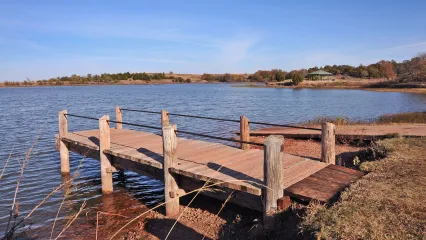
A relic of the New Deal era, Historic Perry CCC Lake is located just south of the North-Central town of Perry. The lake has a few handicap accessible areas as well as decent bank fishing opportunities on 3/4ths of the lake's shoreline. Family-friendly park and amenities.
Trout Stocking Season
- November 1 - March 31
Profile
- 32-acres; mostly soft bottom, submerged rocks/boulders, light vegetation, thick shoreline reeds
- Boat ramp
- Picnic areas
- Playground
- Fishing piers & jetties
- Restrooms
Drive Time
- From OKC: 1 hour
- From Tulsa: 1.25 hours
- From Stillwater: 30 minutes
Bait & Tackle Nearby
- Lake McMurtry West Bait Shop (30285 Bronco Curve, Stillwater, OK 74075)
- Cowboy Corner at Lake Carl Blackwell (11000 Oklahoma 51 West, Stillwater, OK 74074)
- Walmart Supercenter (4545 W 6th Ave, Stillwater, OK 74074)
- Academy (2409 N Perkins Rd, Stillwater, OK 74075)
Fishing Tips
Trout will cruise the shoreline flats and coves as well as nearby drop-offs throughout the day. Occasional midday and evening caddis and mayfly hatches will bring trout to the surface along the shoreline directly across from the boat ramp and the eastern-most cove at the end of the park road. Inline spinning lures and spoons work well in coves and immediately adjacent shorelines. But, like most still water trout fishing, the most effective and consistent way to catch them is to fish off the bottom with PowerBait. Early season efforts at Perry CCC Lake will be best rewarded in the coves adjacent to the boat ramp and the flat along the pavilion shoreline directly across from the boat ramp. January and February begin to see better catch rates along the dam and eastern shorelines.
Top option: Bait
- Editor's Choice: PowerBait in nymph, balled in a teardrop shape around a size 10 or smaller snelled hook and attached to a snap swivel with a 1/8th ounce casting sinker placed above the swivel on the main line (6- or 8- pound monofilament). Cast straight out and let the weight sink to the bottom. Once the weight has hit the bottom, reel up the slack until the line is tight with the rod tip. Place the rod in a rod holder or hold in hand and wait for a bite. On windy days, size up your weight to a 1/4th or 3/8th ounce casting sinker to better keep the line tight to the rod tip, which will help indicate more bites. If you're looking to catch and release, set the hook early before the fish has the opportunity to swallow the hook.
- Other productive baits include salmon eggs, kernels of corn, and scented trout worms.
Secondary option: Artificial
- Editor's Choice: Reliable cast and retrieve lures (1/32nd - 1/8th ounce) include Rooster Tails in hammered copper frog, grasshopper, black and hammered silver white, Super Dupers in brass/gold prism-lite and rainbow trout, Little Cleo Spoons in gold fluorescent orange stripe, and Kastmaster Spoons in gold, silver, orange and trout patterns. If you need to get to greater depth, add a piece of split shot to the line 8-inches above the lure.
- Editor's Choice: Size 6 Chocklett's Bugger Changer in Brown, Olive or Black on a 6-weight fly rod, floating line and 9 foot 4x tapered leader with 2 feet of 5x tippet. Cast out and retrieve with quick strips of line. Other good stripping flies (sizes 6, 8, 10 and 12) include Blane Chocklett's Changers, Rainy's RJ's Jiggy Worm, Rainy's Carter's RL Dragon Fly, and Bead-Head Woolly Bugger. Make sure to keep a few size 18-22 mayfly and caddis imitating dry flies in your box on the chance that you find surfacing fish.
- Robbers Cave
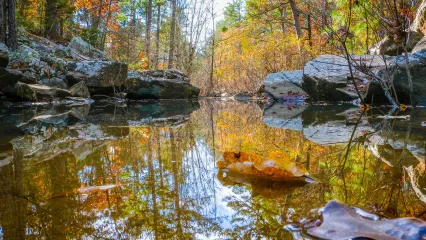 Brett Day/RPS 2019
Brett Day/RPS 2019Situated in the scenic woodlands of the San Bois Mountains, the Robbers Cave Trout Area along the Fourche Maline River is located within the Robbers Cave State Park 6.5 miles north of the Southeastern town of Wilburton. Beautiful backdrops accompanied by the sounds of nature make this a must visit destination for trout anglers! The slow flowing shallow waters of this tailwater and ample bank access create a family-friendly fishing environment.
Trout Stocking Season
- November 1 - March 15
Profile
- 1.5 miles; mixed hard/soft bottom, light vegetation, submerged rocks/boulders
- Camping with full RV hookups
- Equestrian
- Lodging
- Gift Shop
- Hiking
- Picnic areas
- Latrines
Drive Time
- From OKC: 2.75 hours
- From Tulsa: 2 hours
- From McAlester: 45 minutes
Bait & Tackle Nearby
- Rebel Bait Shop (400 Main St, Haileyville, OK 74546)
- Double K Bait & More (30010 S County Rd 4351, Whitefield, OK 74472)
- Sardis Lake Custom Lures (481 SE SW 240th Rd, Tuskahoma, OK 74574)
- B & B Bait & Tackle (16651 OK-9, Eufaula, OK 74432)
- Lakeside One Stop (201 B Ave, Crowder, OK 74430)
- Walmart Supercenter (432 S George Nigh Expy, McAlester, OK 74501)
Fishing Tips
Long, slow moving runs with scattered submerged rocks/boulders make up most of the trout area. Bait fished off the bottom is productive all day, but particularly during the midday hours. Anglers have more success with artificial lures and flies during the lowlight morning and evening hours. Inline spinners, supers dupers and spoons are great options on light-action tackle. Stripping bead and jighead flies is effective for fly anglers.
Top option: Bait
- Editor's Choice: PowerBait in nymph, balled in a teardrop shape around a size 10 or smaller snelled hook and attached to a snap swivel with a 1/8th ounce casting sinker placed above the swivel on the main line (6- or 8- pound monofilament). Cast straight out and let the weight sink to the bottom. Once the weight has hit the bottom, reel up the slack until the line is tight with the rod tip. Place the rod in a rod holder or hold in hand and wait for a bite. On windy days, size up your weight to a 1/4th or 3/8th ounce casting sinker to better keep the line tight to the rod tip, which will help indicate more bites. If you're looking to catch and release, set the hook early before the fish has the opportunity to swallow the hook.
- Other productive baits include salmon eggs, kernels of corn, and scented trout worms.
Secondary option: Artificial
- Editor's Choice: Reliable cast and retrieve lures (1/32nd - 1/8th ounce) include Rooster Tails in hammered copper frog, grasshopper, black and hammered silver white, Super Dupers in brass/gold prism-lite and rainbow trout, Little Cleo Spoons in gold fluorescent orange stripe, and Kastmaster Spoons in gold, silver, orange and trout patterns. If you need to get to greater depth, add a piece of split shot to the line 8-inches above the lure.
- Editor's Choice: Size 6 Chocklett's Bugger Changer in Brown, Olive or Black on a 6-weight fly rod, floating line and 9 foot 4x tapered leader with 2 feet of 5x tippet. Cast out and retrieve with quick strips of line. Other good stripping flies (sizes 6, 8, 10 and 12) include Blane Chocklett's Changers, Rainy's RJ's Jiggy Worm, Rainy's Carter's RL Dragon Fly, and Bead-Head Woolly Bugger. The water flow is basically stagnant making dry and nymph flies less effective.
- Sunset Lake
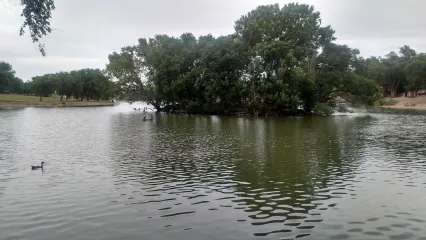
Oklahoma's newest trout fishery, Sunset Lake is a fishing jewel located in the Panhandle town of Guymon. Easily accessible shoreline and a one-mile trail around the lake make for a bank angler's paradise! Family-friendly park and amenities.
Trout Stocking Season
- November 1 - March 31
Profile
- 11-acres; mostly soft bottom, light vegetation
- Picnic areas
- ADA compliant
- Fishing pier
- Playground
- Restrooms
Drive Time
- From OKC: 4.5 hours
- From Tulsa: 5.5 hours
- From Woodward: 2 hours
Bait & Tackle Nearby
- Walmart Supercenter (2600 US-64, Guymon, OK 73942)
Fishing Tips
While trout are ambush predators in moving streams, in the still water of small lakes trout will cruise the shoreline and nearby drop-offs in search of easy meals throughout the day. Occasional caddis and mayfly hatches will bring trout to the surface making for great dry-fly fly fishing opportunities and inline spinning lures always find a fish here and there. But, for the most part, the most effective and consistent way to catch trout in Sunset Lake is to fish off the bottom with PowerBait. Early in the trout season, try multiple spots along the shoreline until you find congregated fish.
Top option: Bait
- Editor's Choice: PowerBait in nymph, balled in a teardrop shape around a size 10 or smaller snelled hook and attached to a snap swivel with a 1/8th ounce casting sinker placed above the swivel on the main line (6- or 8- pound monofilament). Cast straight out and let the weight sink to the bottom. Once the weight has hit the bottom, reel up the slack until the line is tight with the rod tip. Place the rod in a rod holder or hold in hand and wait for a bite. On windy days, size up your weight to a 1/4th or 3/8th ounce casting sinker to better keep the line tight to the rod tip, which will help indicate more bites. If you're looking to catch and release, set the hook early before the fish has the opportunity to swallow the hook.
- Other productive baits include salmon eggs, kernels of corn, and scented trout worms.
Secondary option: Artificial
- Editor's Choice: Reliable cast and retrieve lures (1/32nd - 1/8th ounce) include Rooster Tails in hammered copper frog, grasshopper, black and hammered silver white, Super Dupers in brass/gold prism-lite and rainbow trout, and Little Cleo Spoons in gold fluorescent orange stripe.
- Editor's Choice: Size 6 Chocklett's Bugger Changer in Brown, Olive or Black on a 6-weight fly rod, floating line and 9 foot 4x tapered leader with 2 feet of 5x tippet. Cast out and retrieve with quick strips of line. Other good stripping flies (sizes 6, 8, 10 and 12) include Blane Chocklett's Changers, Rainy's RJ's Jiggy Worm and Bead-Head Woolly Bugger. Make sure to keep a few size 18-22 mayfly and caddis imitating dry flies in your box on the chance that you find surfacing fish.
















